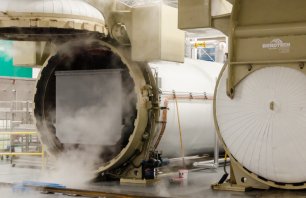Throughout the past decade, there have been outbreaks of severe acute respiratory syndrome (SARS), H1N1 influenza, Middle East respiratory syndrome (MARS), Ebola, mpox and, of course, the COVID-19 pandemic that significantly impacted the global healthcare industry and billions of people around the world with more than 13 billion vaccines administered globally and, at its peak, approximately 1.9 million new hospitalizations reported to the World Health Organization (WHO). These experiences have raised concerns around disease transmission and what special handling is required for the disposal of biohazardous waste.
In light of these impacts and concerns, as well as the daily risks that exist when providing health care (spread of bloodborne pathogens and the risk of needlestick injuries), compliant biohazardous waste disposal is essential in healthcare infection prevention and keeping workers safe. It’s crucial that healthcare professionals familiarize themselves with proper biomedical waste management and disposal.
What is Biomedical Waste?
The Government of Canada defines Biomedical Waste as “waste generated in human and animal health care facilities, medical or veterinary research and training facilities, clinical testing or research laboratories, as well as vaccine production facilities. Biomedical waste is segregated from the general waste stream as it requires decontamination prior to disposal.” Biomedical waste is any waste saturated with liquid or semi-liquid blood or other potentially infectious materials (OPIM) that has the potential to cause harm or infect humans. This includes, but is not limited to:
- Yellow bag waste – non-sharp items saturated or caked with blood or OPIM such as bandages, gauze, plastic tubing, and personal protective equipment (gloves, gowns, goggles)
- Sharps waste – examples may include needles, scalpels, syringes, lancets, and any other object exposed to blood or OPIM and capable of puncturing human skin
- Anatomical waste – limbs, organs, tissue samples (decanted of chemical preservatives)
- Cytotoxic waste – masks, gloves, gowns, empty vials, empty intravenous bags, tubing, and/or bottles used in the administration of chemotherapeutic drugs
- Laboratory waste – cultures and stocks that contain human disease-causing agents
Who Generates Biomedical Waste?
The health care industry creates a lot of waste. According to the Canadian Medical Association Journal, a report on 110 Canadian hospitals found that they generated almost 87,000 tons of waste annually. With a large majority coming from hospitals, doctors offices, dentists, research facilities, and veterinarians. But healthcare facilities are not alone – tattoo parlors and funeral homes also generate biomedical waste.
How Is Biomedical Waste Regulated?
Regulations are in place to help reduce the risk of injury and infection during handling, at the point of collection and transport for ultimate disposal. Biomedical waste disposal is overseen by several regulatory bodies, including: Transport Canada, Health Canada, Environment Canada, Provincial Environment Ministries, Canada Labour Code, and Provincial Labour Ministries.
For instance, through the Environmental Protection Act, the Ministry of the Environment regulates biomedical waste stating the waste must be properly segregated and handled. In addition to the federal and provincial acts and regulations, there are numerous guidelines and standards that further define how biomedical waste should be handled from the point of generation to final disposal. These include the Canadian Biosafety standards and guidelines, the Canadian Council of Ministers of the Environment guidelines on the management of biomedical waste, and various Canadian Standards Association (CSA) standards on the management of healthcare waste and disposal of sharps.
While biomedical waste generated in healthcare facilities and businesses is fully regulated, there are also specific guidelines and rules that apply to consumer-generated biomedical waste in most provinces.
How Is Biomedical Waste Treated?
There are a variety of treatment methods for the disposal of biohazardous waste. The two most common:
- Autoclaving – The most common form of treatment. Waste is subjected to a timed, high-temperature and high-pressure steaming process to kill infectious agents, after which the waste is ready for disposal at a landfill or waste-to-energy facility.
- Incineration – Waste is subjected to high temperatures and burned, with the remaining ash going to a landfill for disposal. Certain materials, in accordance with a vendor’s waste acceptance policy, such as anatomical wastes, non-hazardous waste pharmaceuticals, and cytotoxic wastes should be segregated and incinerated to ensure proper destruction.
Environmental Impact
In addition to the positive impacts on the health and safety of healthcare providers and patients, compliant waste disposal is also good for the environment. According to the World Health Organization (WHO), if done incorrectly, the treatment and disposal of healthcare waste can create health risks by indirectly releasing pathogens and toxic pollutants into the environment. For example, the disposal of untreated medical waste can contaminate drinking, surface, and groundwaters. Therefore, it’s essential to choose a medical waste management provider that properly treats and disposes waste.
Learn more about how Stericycle helps healthcare organizations compliantly manage biomedical waste to ensure staff and environmental safety.



